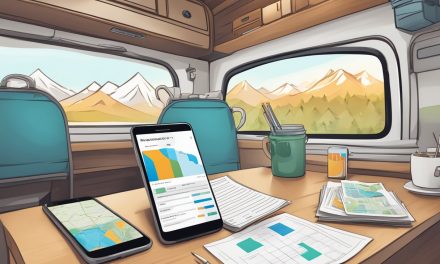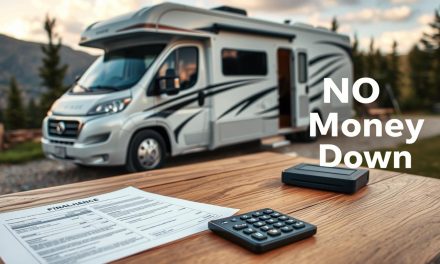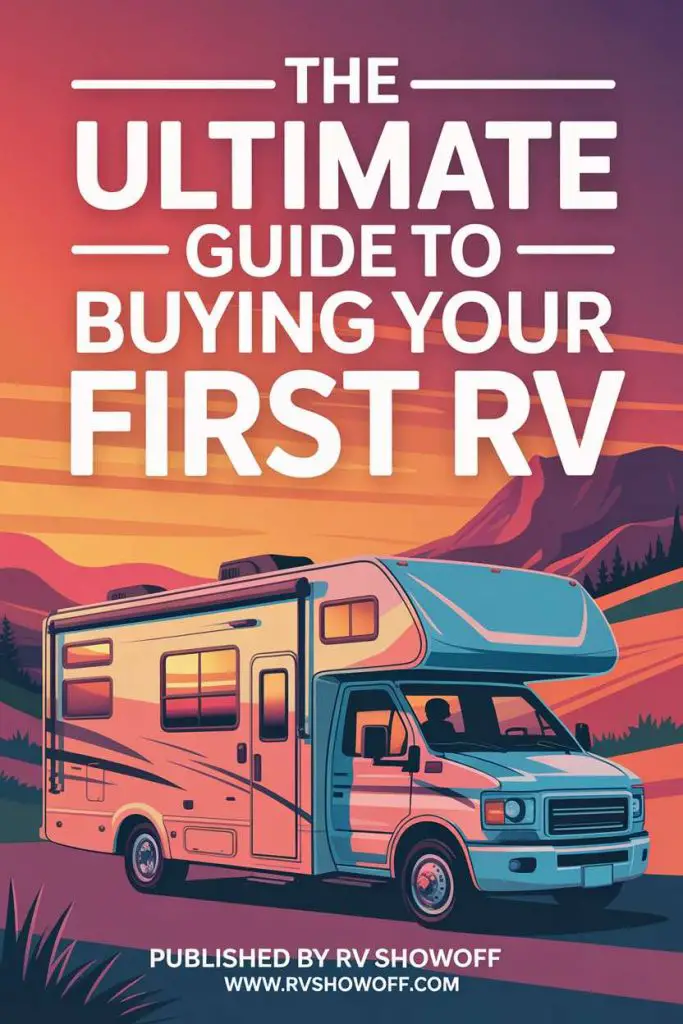Would you like to save this article?
National parks are amazing places filled with stunning views and exciting trails, but they can also be risky if you’re not careful. With over 325 million people visiting these natural wonders each year, safety concerns have become more important. While you’re busy planning your next outdoor adventure, it’s worth knowing which parks might require extra caution.
The National Park Service deals with about 1,800 criminal incidents yearly, from simple vandalism to more serious problems. Some parks have higher rates of both crime and natural dangers than others. Understanding these risks can help you prepare better for your visit and ensure you return home with nothing but great memories and photographs.
Key Takeaways
- National parks attract millions of visitors annually, creating safety challenges that require awareness and preparation.
- Crime rates vary significantly between parks, with some locations reporting higher incidents of theft, vandalism, and other offenses.
- Your safety in national parks depends on research, proper planning, and following park guidelines and ranger recommendations.
Understanding Crime in National Parks
While national parks are generally safe, certain crimes do happen in these vast natural spaces. Theft is the biggest problem you’ll face in parks. Watch out for car break-ins and stolen camping gear, which happen most often in parking lots and campgrounds.
Violent crimes are rare in national parks. In 2023, only about 200 violent incidents were reported across all parks. This is tiny compared to the millions of visitors, but still matters if it happens to you.
Parks are hard to police for several reasons:
- Huge areas to cover – one ranger might be responsible for over 4,400 acres
- Poor cell service in remote areas
- High visitor numbers during peak seasons
- Substance use in some campgrounds that can lead to problems
When visiting parks, take these simple steps to stay safe:
- Lock your car and hide valuables
- Keep expensive gear secure at your campsite
- Let someone know your hiking plans
- Be aware of your surroundings, especially in crowded areas
Remember that park rangers are spread thin across these massive spaces. You’ll enjoy your visit more if you take responsibility for your own safety and belongings.
National Parks with Notable Crime Rates
1. Yosemite National Park (California)
Yosemite sees over 4 million visitors each year, making it a target for thieves. You should be extra careful with your car at trailheads, especially in Yosemite Valley. In 2023, more than 200 theft incidents were reported. Many visitors have learned the hard way that leaving valuables visible in your car is risky.
While violent crime is uncommon, it can happen, particularly in busy campgrounds. Park rangers suggest:
- Always lock your vehicle
- Hide valuables before arriving at parking areas
- Use campground storage boxes for food and supplies
- Stay alert in crowded areas
2. Grand Canyon National Park (Arizona)
With about 5 million yearly visitors, the Grand Canyon faces its share of security issues. The South Rim parking areas are common targets for car break-ins, with around 150 incidents reported in 2023.
You’ll also notice risky behavior at viewpoints. Many visitors ignore safety barriers for photos, creating dangerous situations that can lead to accidents or confrontations.
Safety tips for Grand Canyon visits:
- Keep valuables with you or hidden
- Stay on marked trails and behind safety railings
- Be aware of your surroundings, especially at crowded viewpoints
- Report suspicious activity to rangers
3. Great Smoky Mountains National Park (Tennessee/North Carolina)
As America’s most visited national park with 12+ million annual visitors, the Smokies face unique challenges. The park’s location near several towns and cities makes it accessible but also vulnerable to crime.
In 2023, about 300 incidents were reported, including:
- Vandalism
- Car break-ins
- Drug offenses
- Property theft
You’ll want to be particularly careful at trailheads near park entrances, where thieves know visitors often leave cars unattended for hours. The park’s popularity means rangers can’t monitor all areas constantly.
4. Rocky Mountain National Park (Colorado)
Rocky Mountain’s 4.5 million yearly visitors make it another hotspot for property crime. Its proximity to Denver means day-trippers and thieves alike find it easily accessible.
Trailhead parking lots are particularly vulnerable. About 100 incidents were reported in 2023, mostly involving vehicle break-ins. During peak season, staff shortages can slow response times to reported crimes.
Before your visit:
- Research less crowded trailheads
- Arrive early to busy areas
- Never leave backpacks or electronics visible in your car
- Consider carrying valuables with you on hikes
5. Yellowstone National Park (Wyoming/Montana/Idaho)
Yellowstone’s massive 2.2 million acres make it challenging to patrol, despite having around 4.5 million visitors annually. The park reported roughly 200 incidents in 2023, ranging from theft to occasional violent confrontations.
You’ll find that the park’s remote areas can create a false sense of security. Busy parking areas near popular attractions like Old Faithful are frequent targets for opportunistic theft.
The park’s backcountry presents additional risks, with some missing persons cases each year. Cell service is spotty at best, so you can’t always call for help quickly.
6. Zion National Park (Utah)
Zion’s narrow canyons and popular trails saw 4.7 million visitors in 2023, creating crowded conditions where crimes of opportunity flourish. About 120 incidents were reported, with vehicle break-ins topping the list.
The shuttle parking areas are particularly vulnerable, especially in evening hours. Zion’s limited entry points make it easier for potential thieves to target visitors.
While visiting Zion:
- Use park shuttles when possible
- Keep valuables with you
- Be patient in crowded areas
- Report suspicious behavior to rangers
7. Gateway Arch National Park (Missouri)
Unlike wilderness parks, Gateway Arch sits in downtown St. Louis, bringing urban crime concerns into the park setting. With about 80 reported incidents in 2023, your risk here is different but real.
The park’s location in a city with high crime rates means you should use the same caution you would in any urban area:
| Time of Day | Risk Level | Recommendations |
|---|---|---|
| Daytime | Low to Moderate | Stay aware, travel in groups |
| Evening | Moderate to High | Stick to well-lit areas, consider rideshare |
| Night | High | Not recommended without organized tours |
You’ll want to be especially careful in parking areas and when walking to and from the park, as most incidents happen at the park’s edges where it meets the city.
What Makes Parks Dangerous
Several things can make national parks risky places. When you visit busy parks like Great Smoky Mountains or Yosemite, you’re sharing space with millions of others, which can increase the chance of theft or conflict.
Parks are often in remote areas with few rangers around. If you need help, poor cell service can make it hard to call for assistance. This problem is getting worse with recent staff cuts at popular parks.
Watch your belongings! Thieves target unattended cars and camping gear at trailheads. It’s much more common to have your stuff stolen than to face violent crime.
Drinking and drug use at campgrounds can lead to fights and other problems. People sometimes make poor decisions when under the influence in outdoor settings.
The most dangerous parks often have:
- Limited staff presence
- High visitor numbers
- Remote locations
- Poor emergency response options
Wider Impacts and Safety Worries
National parks face challenges beyond crime stats. Budget cuts in 2025 have left parks short-staffed, creating a ripple effect of problems. You might notice more trash on trails, fewer rangers to help in emergencies, and slower response times when issues arise.
Parks are struggling to keep up with basic maintenance. Many trails that need repairs sit untouched. Visitor centers operate with reduced hours. These cuts impact your safety when visiting parks.
Visitor behavior is another big concern. People often:
- Take dangerous selfies near cliffs
- Ignore wildlife distance guidelines
- Venture off marked trails
- Skip reading safety notices
When you visit parks with fewer staff, these risky behaviors become more dangerous. With limited ranger presence, you’re more on your own if something goes wrong.
The combination of budget problems and careless visitors creates a perfect storm for safety issues. When planning your next park visit, you should prepare for less oversight and take extra precautions to stay safe.
Staying Safe in National Parks
National parks offer amazing natural beauty but come with certain risks. The Grand Canyon, Yosemite, and Great Smoky Mountains rank among America’s most dangerous parks. Here’s how you can stay safe during your visit:
Essential Safety Tips:
- Lock your car and hide valuables from view
- Use bear-proof containers when camping
- Hike with friends instead of alone, especially in remote areas
- Check the National Park Service website for alerts before your trip
Be Prepared:
- Bring extra food and water
- Plan bathroom breaks (facilities might be limited)
- Pack a first aid kit and emergency supplies
Wildlife Awareness:
- Keep a safe distance from all animals
- Store food properly to avoid attracting bears
- Watch for snakes like rattlesnakes and copperheads
Remember to tell someone your hiking plans before setting out. If you see anything suspicious, find a ranger right away. Following park rules isn’t just about avoiding tickets – it helps keep everyone safe!
Supporting National Parks
You can help parks deal with safety issues and staff shortages in several ways. Reach out to your representatives about park funding – a simple phone call or letter can highlight why these natural treasures deserve financial support. When you visit, follow Leave No Trace guidelines by staying on marked trails, packing out your trash, and respecting wildlife from a distance.
If you’re planning a nature trip and worried about crowded national parks, don’t forget about state parks! They often have similar beautiful landscapes with better staffing levels. Many state parks offer great hiking, camping, and wildlife viewing with fewer visitors.
Your actions make a difference:
- Contact elected officials about park funding
- Practice responsible visiting habits
- Explore state parks as alternatives
Bold choices today help preserve these special places for tomorrow’s visitors.
Crime in National Parks
While national parks like Yosemite and Great Smoky Mountains showcase amazing natural beauty, they also face safety challenges. High visitor numbers, remote locations, and limited staff create opportunities for theft and other crimes.
Many park visitors share their experiences online about having gear stolen from campsites or valuables taken from parked cars. These incidents happen more often during peak seasons when parks are crowded.
Tips to stay safe:
- Lock your car and hide valuables
- Don’t leave camping gear unattended
- Travel with a buddy on remote trails
- Tell someone your hiking plans
- Check the park’s safety alerts before your trip
Park rangers work hard to keep everyone safe, but they can’t be everywhere. By taking simple precautions, you can help protect yourself and your belongings while enjoying these natural treasures.






